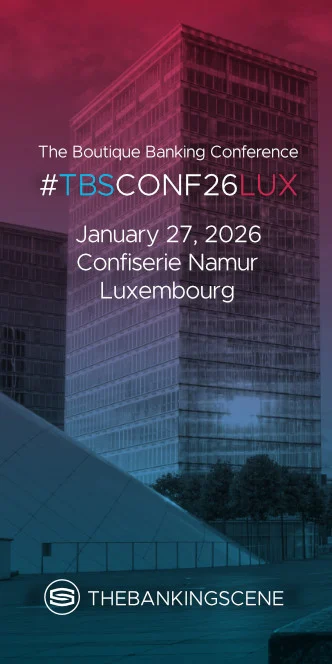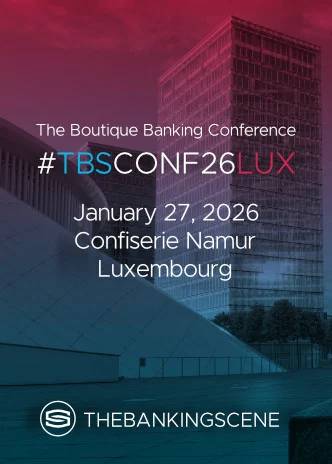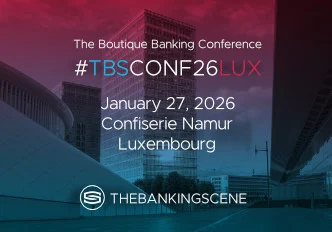
Insights & Opinions
Deepfakes and the Future of Identity: How AI is Shaping Trust and Fraud in Financial Services
Mon, 09 Jun 2025


The Disappearance of Certainty
I’m not telling you anything new when I say that trust has never been discussed more than today. A constant wave of change makes humankind question everything. That not only affects trust in institutions, but trust in the very signals we once relied on to validate identity: voices, phone calls, emails, logos and even faces. These once-stable identifiers are now fluid, manipulable, and in many cases, indistinguishable from fakes.
Reality and digital are being merged, introducing new societal challenges to the already fragile balance between digital convenience and optimal services. This shift is most acutely felt in financial services, a sector that depends on confidence, stability, and clarity. During The Banking Scene Conference 2025 Brussels, on the Fraud & Compliance Stage, industry leaders explored the growing fragility of identity in this volatile landscape. One takeaway stood out: the institutions best positioned to navigate this new reality aren’t those with the most data, but those with the greatest discipline in verifying and protecting identity.
A Landscape of Suspicion
First came Madisyn Fox, International Partner Manager of the Global Anti-Scam Alliance (GASA), with a sobering view from the consumer side. The belief that people can simply “spot scams” is proving dangerous. Two-thirds of respondents said they felt confident in recognising fraud. And yet, 93% of scams go unreported, explained Madisyn. Victims are too embarrassed, unsure, or disengaged. Worse still, awareness often leads to overconfidence. People who believe they are savvy become less cautious, not more.
So education, while necessary, is not sufficient. What’s needed is something more structural - an infrastructure of verified identity, a language of trust signals, and communication channels that can be relied upon.
The other speakers were reconfirming that. Rebekah Johnson of Numeracle framed the problem like this: digital interactions are no longer anchored in certainty. A voice on the phone, a text message from your bank, an email from a regulator, each of these could be genuine or malicious, and increasingly, there is no visual or behavioural cue left to tell the difference. “There’s no reference point for ‘real’ anymore,” she said. When even sound and sight can be synthetically reproduced in seconds, trust cannot depend on perception.
Even you can become a victim these days as it becomes impossible to distinguish real from fake these days.
The erosion of trust in communications has been swift and severe. In the U.S., over 845,000 consumers were targeted with voice cloning scams in 2024. That same study concluded that 50% of companies were effectively targeted by audio or video deepfake scams in 2024. One case involved a company losing $25 million due to a fabricated executive call.
If you think this is a faraway story that doesn’t happen here, think again. Remember the CEO-fraud of Crelan, where the company lost 70 million euros in 2016? Today’s fraud cases simply got more complicated, more real, and it is just a matter of time before we get to read, hear or see more local cases like this.
The scale is staggering. Carriers like T-Mobile and Verizon now block billions of scam calls each year. And yet, despite this effort, consumers have retreated. Caller ID is no longer trusted. A ringing phone has become a source of anxiety, explained Rebekah.
This collapse in trust is not only a risk for consumers, it’s a structural problem for banks. Digital customer journeys still rely heavily on real-time communications. If users no longer answer calls, read texts, or trust app notifications, then authentication itself is weakened. Every interaction becomes suspect.
At the same time, fraud detection is improving, but the attackers are improving faster. That’s not because they have superior technology; it’s because they exploit systemic gaps. The onboarding process, the soft underbelly of KYC, becomes a weakness when third parties, like telecoms, fail to verify their own traffic sources.
Fraudsters know this. They spoof numbers, hijack brands, and flood networks with high-volume impersonations. Rebekah cited one example of both the FBI and the National Bank of Belgium being impersonated in campaigns that were as sophisticated as they were audacious.
Identity as the New Perimeter
What is the path forward? According to Rebekah, we need to bring the same identity rigor to communications that we apply to transactions. She proposes a system wherein brands are vetted and verified prior to engaging with consumers. Once authenticated, their name, logo, and purpose of the call are displayed on a user’s device. This isn’t merely about technology; it’s about context, clarity, and a return to legibility in the digital space. More than that, it is a sign that corporations and consumers are in this together. It is a way to improve trust by showing goodwill in the process.
Adam Preis of Ping Identity shared a parallel philosophy. His presentation outlined the mechanics of modern identity orchestration. Old models relied on fixed rules and one-size-fits-all access control, but that is no longer enough. Today, new systems interpret behaviour in context. Does the user normally log in from this device? Is the request consistent with past activity? Was it preceded by a communication that checks out? Access, then, becomes an evolving judgment, not a static gate.
He also emphasised that identity isn’t a checkpoint; it’s the essence. When the entire digital ecosystem is in flux, identity is the one element that must remain consistent. Preis laid out a framework that included real-time anomaly detection, liveness verification, dynamic authorisation, and decentralised credentialing, all coordinated to reduce friction without compromising vigilance.
The Real Story: Governance, Not Gadgets
The good news? Pieces of the solution already exist. Call vetting, secure credentialing, anomaly-based authentication, and proactive threat orchestration are being deployed today. What’s missing is coherence: a shared commitment across banks, telcos, regulators, and vendors to treat identity as an asset worth securing from every angle.
The emerging regulatory frameworks in Europe, such as PSD3 and FiDA, highlight that identity is no longer a peripheral issue. These initiatives aim to standardise and reinforce authentication, customer data access, and fraud prevention. PSD3 is poised to introduce stricter requirements for customer authentication and incident reporting, while FiDA addresses secure and permissioned access to financial data. Both frameworks point toward a future in which digital trust is not just encouraged but mandated.
However, regulation alone won’t solve the trust gap. It provides a foundation, but the execution still lies with the industry. Technology alone will not solve it either.
It’s a governance story. Individual institutions will not solve this problem; they merely pour a drop of water on the fire. What is required is a society-wide establishment of higher standards for verification, expecting more from the systems that connect people to institutions. It is also about recognising that in a world where appearances can no longer be trusted, identity must be earned and displayed every step of the way.
Banks, telecoms, regulators, and technology providers must stop working in silos. Fraudsters already collaborate, iterate, and scale their operations. We must do the same. Cross-sector alliances, shared fraud databases, and identity signal standards are not futuristic dreams, they are today’s imperatives. Consumers must also be part of this movement, demanding transparency from the brands they trust. Trust needs to be treated as an asset with measurable impact and visible signals. Only then can we restore confidence in an ecosystem that currently feels anything but safe.
At The Banking Scene, we are pleased to have contributed to this wider dialogue, and we hope the industry will make further efforts to create a trusted digital life for each individual and organisation. That is the only way we can safely live the future you and I want.
For more information on digital identity, please have a look at our website for more inspiration.



